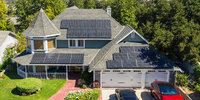The Early-Ins on Home Solar got the best deals, thanks to attractive state and federal incentives. Most were able to slash their electric bills to zero. These programs kickstarted the solar movement in the US.
But these programs will need to change. Each new home solar installation contributes to a worsening of The Duck Curve problem facing the utilities.
In the meantime, states like California have mandated that utilities must add more solar power to the grid, but with massive battery storage so that these solar farms don’t add to the Duck Curve problems.
Homeowners who have not or cannot invest in home solar complain are paying higher rates to support these various solar programs…and everyone’s rates are going up. Neighbors without solar believe they are paying the bills of those who do. No surprise, state legislatures are hearing from the voters.
Further, public utility commissions are listening more closely to utilities, and both are seeking solutions that will pass muster with legislatures and customers.
So, IMNSHO, home solar incentives will need to be reshaped going forward, and solutions are needed to satisfy all parties. It will mean a serious compromise. So, the Remote Home Solar proposal attempts to solve some of the challenges:
We are still in an era where investment by homeowners is the best tool for accelerating solar adoption. Commercial generation companies are lagging.
Not all homes are located where solar is attractive. Western New York is too cloudy, for example, and even coastal California has weeks marine layer that makes solar far less predictable.
Not all homes can physically accept solar panels, due to numerous locale constraints, not to mention homeowner association restrictions and unappealing appearance.
Public utility commissions will likely be allowed to require new installations to include home battery storage to carry the load through the evening peak usage period.
Utilities will be given control over home battery storage systems to balance the benefit to both the homeowner and the utility. These many units will create a virtual power storage system on the local grid.
Homeowners will get the benefit of 1) lower installation cost (no panels on roof), 2) no maintenance and repair issues with panels, 3) ideal desert location for their solar panel investment and 4) local power storage for many hours of emergency backup.
Desert solar farms will grow the capability of their grid connections commensurate with demand.
Utilities and public utility commissions will need to work out how best to handle the grid use costs. It will be contentious…but something must change
Note that Tesla Energy now requires Powerwall with all solar installations. I suspect this is setting the stage for something like Remote Home Solar.



